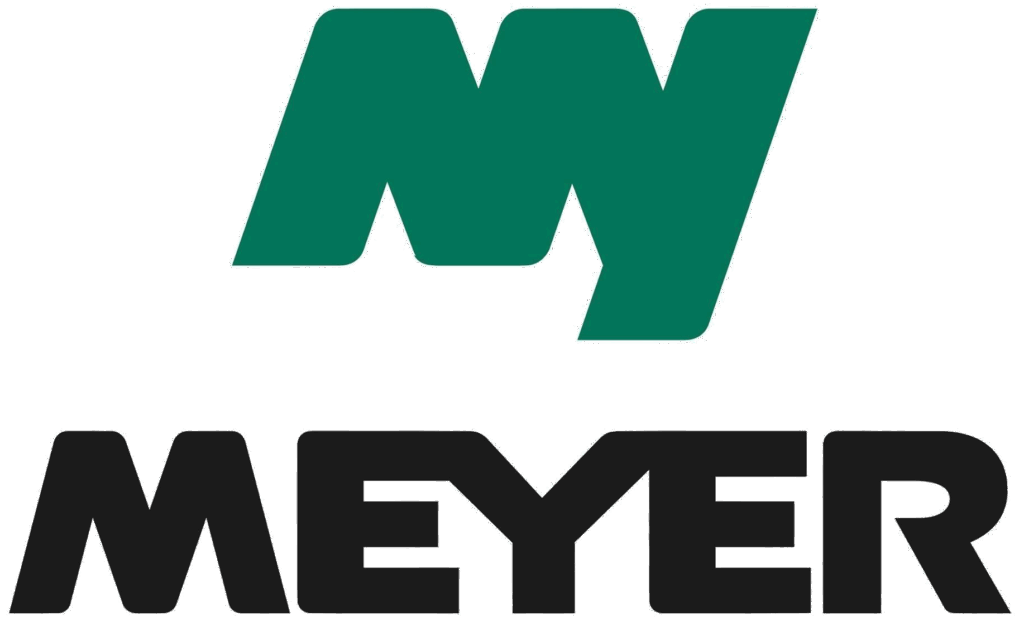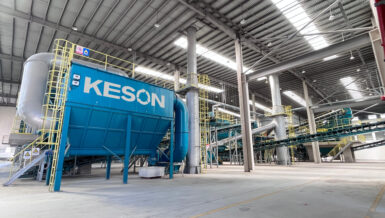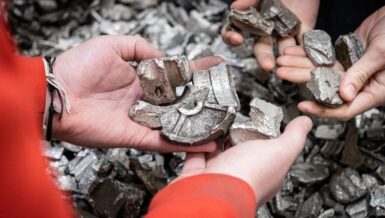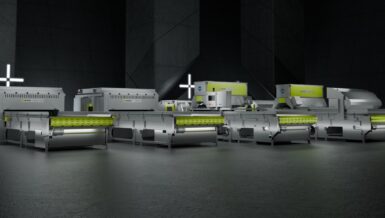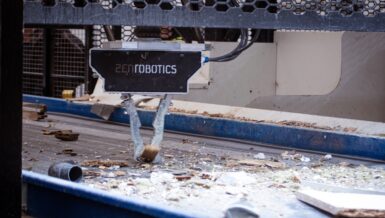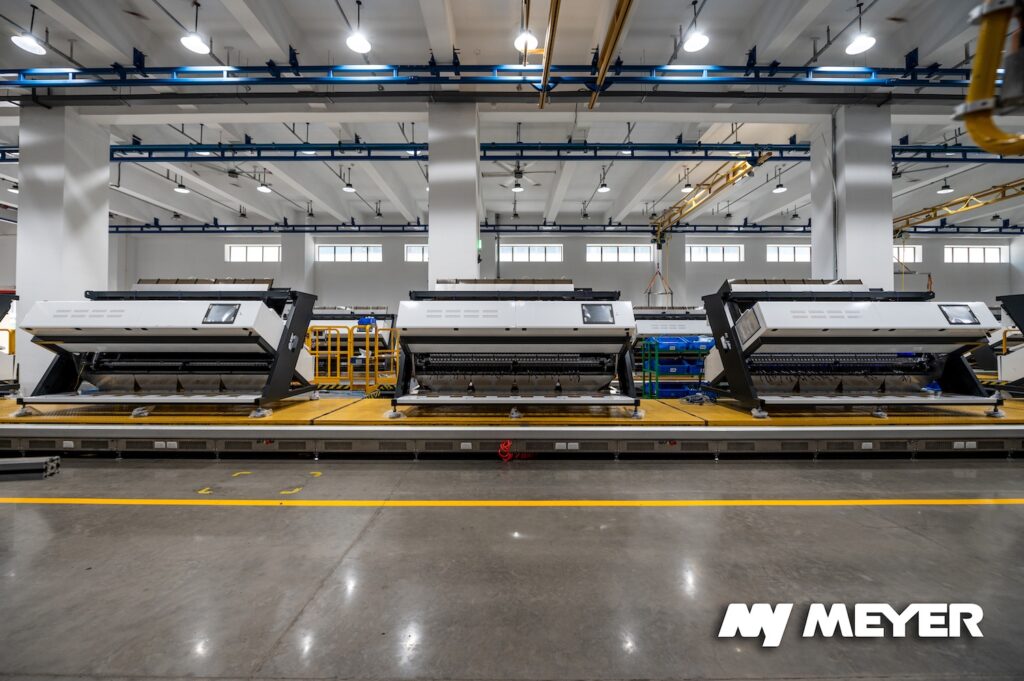
It is precisely in this space that optical sorting systems have emerged. Not as a competition to traditional techniques, but as their complement and enhancement. Where flotation sees only density, and electrostatics sees differences in charge, optics can go deeper: identifying color, precisely defining polymer type, and even detecting a bottle based on its characteristic features.
The Optical Eye of Recycling: From Color to Polymer Identity
Today we are speaking about an entirely different reality. Every single polymer particle begins to carry weight, not only measured in tons of raw material, but also in economic balance sheets and environmental accounting. Sorting is no longer just a technical stage, but a critical point of the entire recycling system. It is here that the outcome is decided, whether the recovered material will have real value, or whether it will become a logistical problem in the next stage.
Modern optical sorting systems increasingly resemble complex organisms rather than classical industrial machines, with every component playing a precisely defined role. A good example are sorters that combine multiple layers of advanced technology into a clear, highly efficient process. Only when we can distinguish not just the color of a bottle, but also its shape, structure, and polymer type, do we truly give waste a second life.
In recent years, the development of optical sorting technology has focused on increasing detection accuracy and improving the reaction speed of separation systems. In Meyer’s solutions, these two directions come together in a unified architecture built on three pillars: image detection, intelligent classification, and precise separation.
Object Sorting: From Waste to Data
In object-sorting solutions, separation is no longer limited to visual differences. Algorithms analyze a combination of color, structure, and polymer type, allowing precise grouping of objects. Built-in AI modules can, for example, identify bottles or cans from a single manufacturer, based on shared visual characteristics. Each object is not only sorted but also counted, giving operators a complete database of the sample’s content and segregated groups. In this form, sorting becomes a process of intelligent identification and documentation, where every element in the waste stream has its own identity, position, and value within the system.
Polymer Sorting: When Every Flake Reveals Its Invisible Signature
Polymer sorting is the stage where plastic flakes stop being a uniform mass. Each one begins to reveal its polymer identity. Infrared cameras do not look at color or shape, but at the material’s structure, reflecting characteristic light bands. Thanks to this, the system can distinguish HDPE from PP, PET from PVC, even when all the flakes look similar and share the same shade. Flakes that appear identical to the human eye reveal a unique pattern to the system, unseen, yet decisive for the material’s future. Polymer sorting with infrared technology enables not only the separation of clean fractions but also the reduction of cross-contamination that previously limited the quality of recovered raw material.
Color Sorting: Where Shades Become Data
In the world of polymers, color is more than aesthetics. It’s a signal that determines the material’s value in the recycling loop. For humans, it’s difficult to spot the differences between individual plastic flakes, especially when shades are similar. For the machine, it’s a matter of algorithms that analyze not just the visible color, but the entire spectrum of reflected light. UHD cameras capture images with such precision that the difference between “light blue” and “turquoise” is no longer a matter of subjective judgment. It’s mathematics. Pure and precise.
Color sorting is not just about grouping. Each plastic flake becomes an object of detailed analysis, and the system decides which fraction it belongs to based on strict rules. Thanks to this level of accuracy, it’s possible to create clean fractions ready for reuse and every single flake gains its defined role in the new recycling cycle.
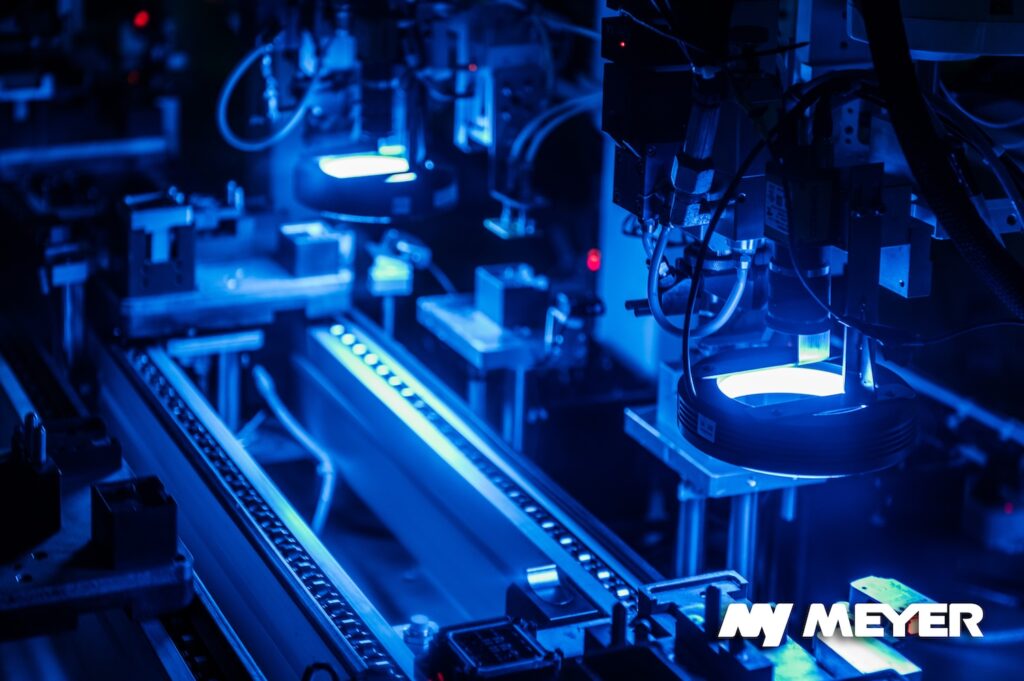
Flake Analyzer & Master 4.0: The Brain and Heart of the Production Line
The three sorting methods – object, color, and polymer – do not operate in isolation. Their real power shows when combined with the Flake Analyzer, which can precisely examine the composition of a plastic flake sample, and the Master 4.0 system, which enables full process control directly from a computer or smartphone. Thanks to this integration, the operator receives instant insights into the state of the material stream, identified fractions, and the performance of machines connected within the intelligent recycling line.
Intelligent Separation in Practice: Object, Polymer, Color
When we entered the client’s facility, the first task was to organize the waste stream at the object sorting stage. We installed a MEYER KC series object sorter as the first step of separation, designed to separate polyolefins from other contaminants. This ensured that the following processes could operate on a more uniform material, while giving operators full control over the first quality filter.
After object separation, the material stream moved on to the next stage of processing and mechanical cleaning, where it was shredded and prepared for precise analysis. In this part of the line, we used a MEYER CI series polymer sorter to accurately separate HDPE from PP. The initial mix contained about 70% HDPE and 30% PP, and thanks to efficient separation, the final fractions reached a purity of 98.5–99.5%, enabling us to move to the next stage: color separation.
At this stage, our engineering and technical team stepped in. During material trials at the Meyer Europe Test Center, we prepared several options for color sorting, which were then presented to the client. Based on these, a decision was made to implement one of the solutions.
The Meyer team proposed three strategies:
- Monochromatic fractions – the material stream was divided into separate color paths: white, blue, green, red, yellow, black, and a mixed fraction of other shades, with gray color the most dominant.
- Extraction of White and Natural HDPE – During the sorting process, HDPE was separated into distinct fractions: white, natural (transparent/neutral), and a mixed-color fraction.
- Removing the black fraction and then separating the remaining colors into warm and cool tones is an approach that maximizes the value of HDPE with minimal installation effort. First, we extracted the black flakes, considered the least desirable, and then moved on to dividing the stream into warm and cool tones. Sometimes, a simple split is enough to significantly increase the material’s value and prepare it for the next production cycle.

The impact of the implementation at the client’s plant was visible from the very first days of operation. The intelligent combination of object separation, mechanical material preparation, polymer sorting, and color sorting produced high quality HDPE and PP fractions that not only met strict purity requirements but were also precisely divided by color, ready for the next production cycle.
The client chose one of the color sorting strategies based on their needs and the capabilities of their facility. The selected solution optimized the value of the recovered material while maintaining operational simplicity.
The entire implementation is a clear example of how precise tools and an intelligent approach, spanning from initial object separation to final color sorting, can transform a waste stream into high value material. Modern recycling is not just about machines and technologies, but also about the coordination of engineering expertise, testing, and operational decisions, which together create a system that is efficient, predictable, and flexible.
A New Era of Sorting – Integration That Creates Value
Looking into the future of polymer sorting, it is clear that we are entering an era of full integration between technology and data. UHD cameras, Maglev ejectors, AI systems – each of these elements becomes part of a bigger process, where the goal is no longer a single stage of separation, but the synergy of methods that allow the waste stream to be treated as a valuable resource. Object separation, flake preparation, precise polymer and color sorting – all together form a process where every fragment of material carries weight and significance.
In short: the future of polymer sorting is no longer about simple screening, but about intelligent reading of the material, making informed decisions, and harnessing the synergy of methods so that every fraction has its place and real value. And that is what truly makes the difference.



